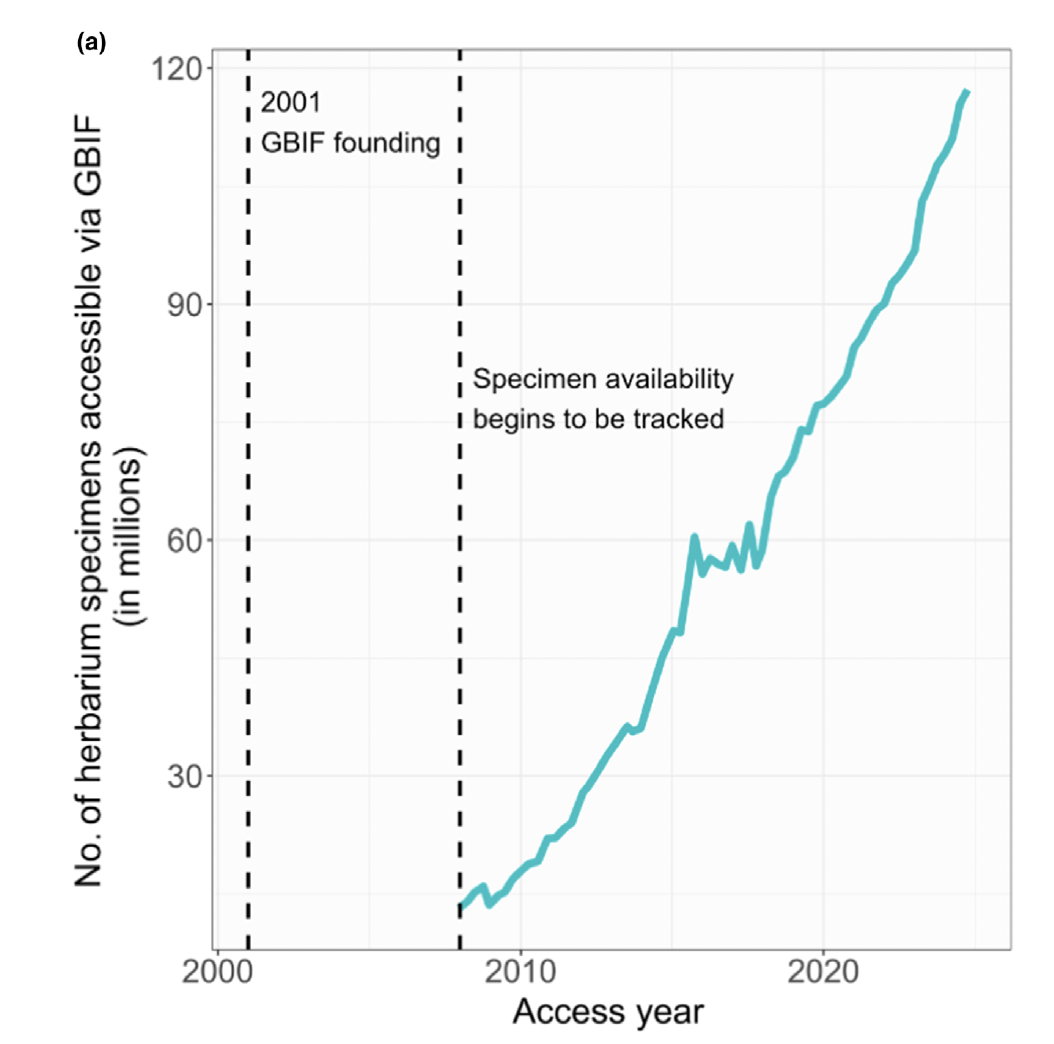By Richard B. Primack
“The book exists for us perchance which will explain our miracles and reveal new ones.” Henry David Thoreau in Walden.
The online mobilization of herbaria has made tens of millions of herbarium specimens digitally available. This shift has revolutionized investigations of phenology (the biological study of timing), including plant responses to climate change.
These specimens can be used to demonstrate that plant species are now flowering and leafing out earlier than in the past due to a warming climate.
 |
| Photo 1: Herbarium specimens, such as this one of a horse chestnut, are increasingly being used in climate change research. |
 |
| Figure 1: Over 100 million digitized herbarium specimens are available online, with about 6 million more specimens being added each year. |
In a recent article published in the New Phytologist, we identify two main themes associated with this growing body of research, and highlight a selection of recent publications investigating phenology at large spatial and temporal scales and in under-studied locations. We also present publications testing long-standing theories and novel questions in ecology and evolution that could not previously be answered.
 |
| Photo 2: In one recent study, plum species that flower before they leaf out were shown to live in drier climates than other species. |
 |
| Photo 3: In another study, male poplar and aspen trees were shown to flower earlier than female trees. These differences might become more pronounced with climate change. |
This field will see further breakthroughs as herbaria around the world continue to mobilize and digitally interlink their collections.
Here is a link to the article: LINK










